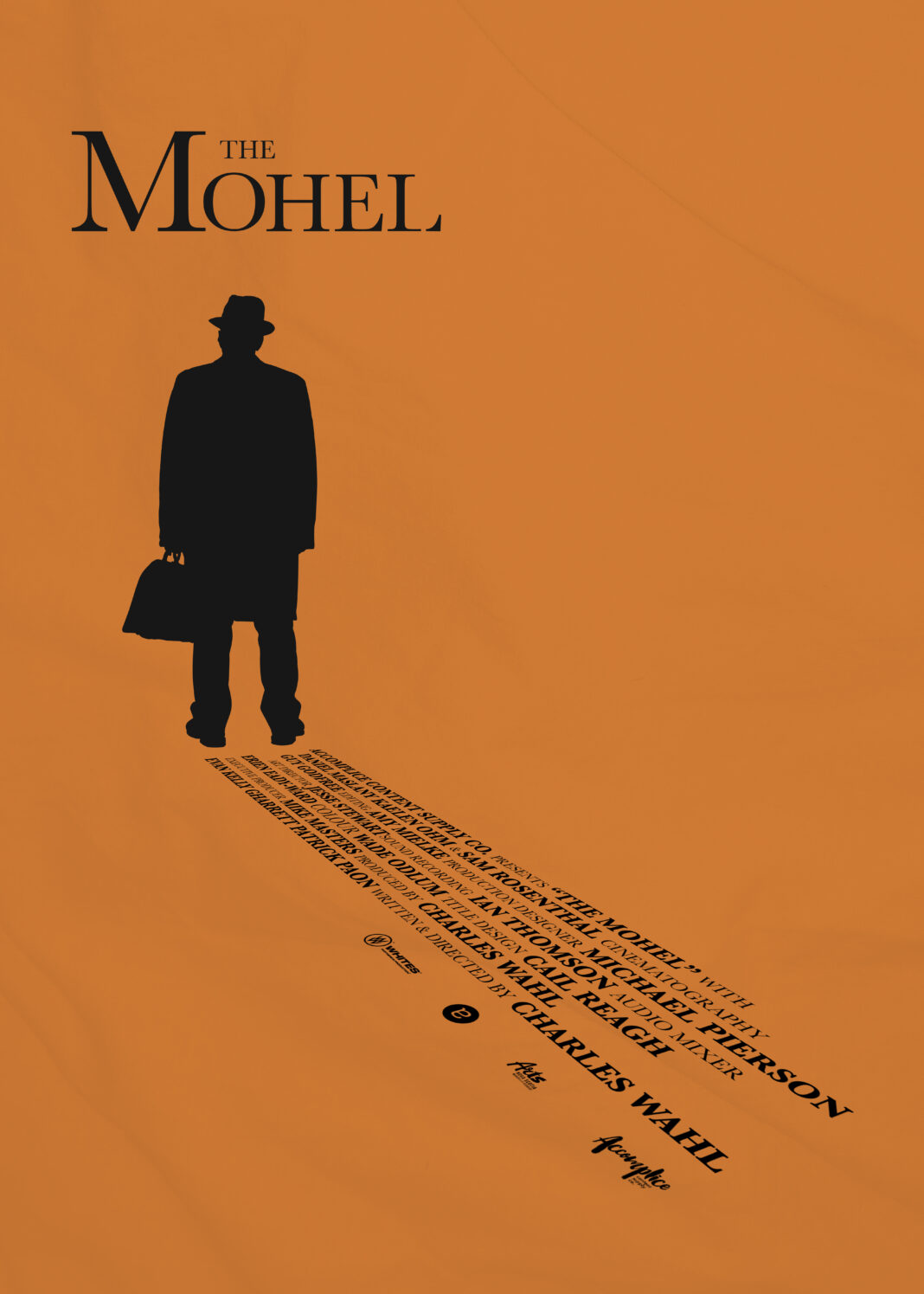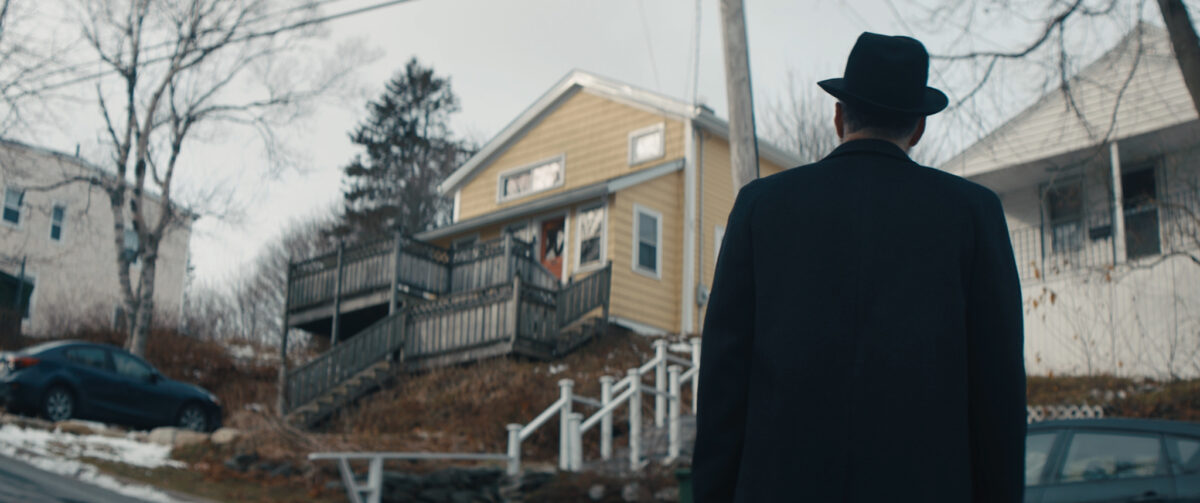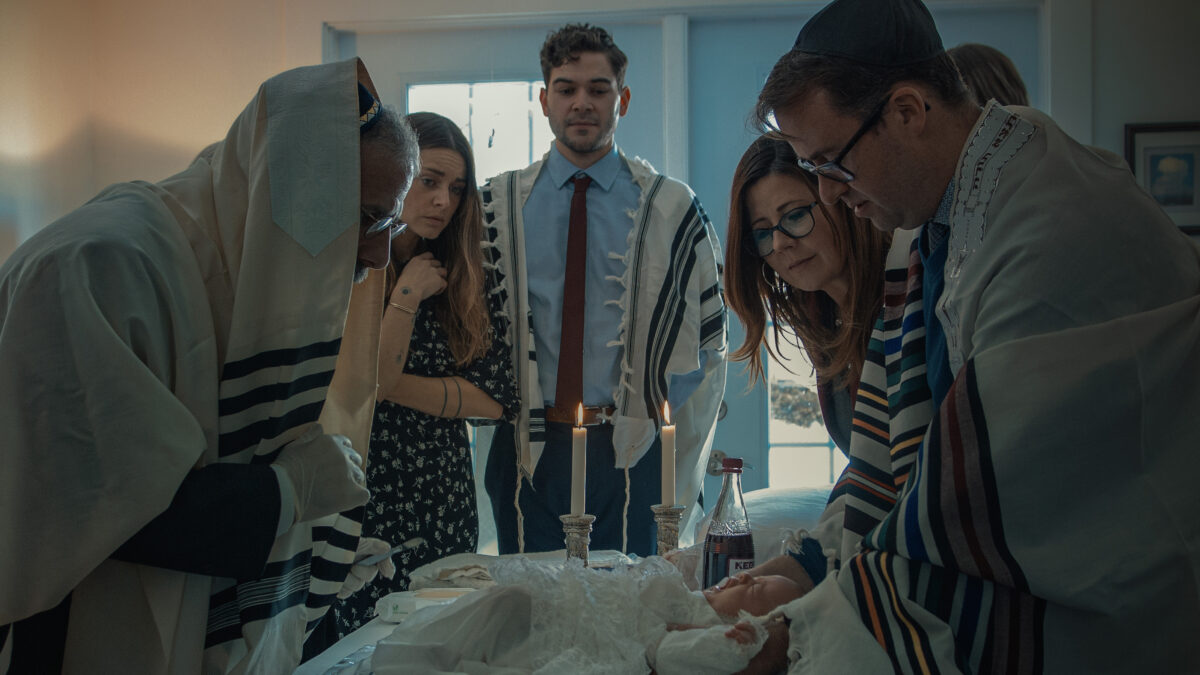Charles Wahl focuses on a specific part of Jewish life in his new short THE MOHEL.
Film And TV Now spoke with the director, as he reflected on the short and its’ representation of Jewish communal experiences.
FILM AND TV NOW: This is a more intimate portrayal of the Jewish community, embracing one of the key moments. What was the start-off point for the film?
CHARLES WAHL: The idea to make the film came from a conversation I was having with another Jewish filmmaker as we were at a screening and waiting for a film to start.
I was telling him stories about what it’s like to live in a place that has a small Jewish community, and the challenges that come with it, including trying to put together a Brit Milah. I got into stories about the religion in general that I had heard from friends and family and by the time the movie started he said to me “You have to make a movie about this.”
Initially I didn’t really want to dive into doing something about religion, but the more I thought about it the more I started to frame a story that dealt with themes and topics that I think are worth discussing. The often transactional nature of religion, and the challenges of maintaining religion and old world traditions in the modern world.
Creating a film that centres on a new father trying to please his wife, mother, and a rabbi seemed like the perfect setting to tell a profound story and examine those topics.
FTVN: The arrival of the Mohel is visually reminiscent of the arrival of Father Merrin in THE EXORCIST, albeit in daylight. Was this a visual influence of the film and what other films did you look at from a visual perspective when making the film itself?
CW: Haha yes – that part is definitely inspired by the iconic shot from THE EXORCIST. The moment the script was finished I knew I wanted the image of The Mohel arriving to have an impact.
Like in THE EXORCIST, here is a man of religion, an outsider, coming into this families lives for a very brief period, and disrupts everything. Granted it is a much different type of ceremony that he performs, and is a much more pleasant afternoon than what Father Merrin experienced.
We didn’t discuss too many other films when crafting the visual look of the film. A SERIOUS MAN was referenced briefly, but it was more of an overall tone and subjectivity that we tried to achieve more than mirroring any specific film that’s out there. We strove to make the film feel very raw and authentic, while feeling cinematic at the same time. In preparing to do that the cinematographer and I looked more at photos that had the right mood as a jumping off point.
FTVN: Did you do much research into the film before writing the script?
CW: I actually didn’t need to research too much in the writing portion. I am a Jew myself who married a woman that converted, and my father converted as well.
My mother comes from a family of 10 brothers and sisters so I also have many uncles, aunts, cousins and friends who are Jewish. I’ve heard countless stories that are along the same themes depicted in the film throughout my life, and as a father of two boys myself, I’ve had to organize two Brit Milah’s. So I had a solid foundation to work off of as I got into the script.
The additional research was really done once we got into pre production. I wanted to make sure all the religious aspects of the film were authentic, so Sam Rosenthal (the actor who plays The Mohel) and I went to meet with a rabbi at a local synagogue. We sat down, went through the script with him, and he felt the story we were telling was an important one. So he graciously helped us with everything…the proper prayers, the steps of the ceremony, wardrobe, props, etc.
There are some exchanges in Hebrew during the film, and none of the actors actually speak the language. The Rabbi recorded the prayers for Sam so that he could learn them with the correct pronunciation, and Sherry Smith, who plays James’ Mom in the film, was given a recording of someone delivering all of her Hebrew lines in the film that she could learn them. Once we got to the filming and they had to start speaking Hebrew it sounded completely natural.
FTVN: Tell us about your working relationship with your cinematographer Guy Godfree and editor Amy Mielke.
CW: I’ve been fortunate to have been collaborating with Guy Godfree on various projects for a long time now.
Up until The Mohel it had always been on various commercial productions and this was our first time working on a narrative project together. Because of the experience we have working with each other communication is very clear between us, and there is a lot of trust there.
What’s great about Guy is that in addition to having a great eye, he brings a lot to the table when working on a project from production logistics to always pushing for better ideas. He came to town ahead of the shoot so that we had enough time to scout everything together and work out a plan that we all felt good about. By the time we got to filming we had a very clear picture of what we were going to do.
Amy Mielke and I have been working consistently with each other for the last five years on both commercial projects and narrative work. She also edited my previous short film Little Grey Bubbles.
We also have a great working relationship and on a project like The Mohel she gets involved very early and is a big part of working out the style and plan for the shotlist. That way we’re all on the same page of what we are going to get while of course leaving room for inspiration on the shoot days.
Once we get into the actual edit she’s really great at playing with the footage and working out a lot of different ways of putting it all together before I dive in with her and whittle it down to the final product.
FTVN: Tell us about your cast.
CW: The first person cast was Kaelen Ohm who plays Lola in the film. We had worked with each other on my previous short film and I thought she would be a great fit in this role. As I started searching for the right person to play James she recommended Daniel Maslany.
I had seen him on TV before and thought he had the right vibe for it so I started to look up more of his work, and the more I watched him, the more I thought he would be perfect.
Kaelen sent him over the script, and a copy of the last film I made, and then a little while later he reached out and said he’d love to chat about it. We spoke for a really long time, and we hit it off right away. I loved his attitude, and by the end of the call we knew we’d be working together.
The role of the Rabbi was the hardest one to cast of all since his character is the one that swings the whole story. I knew I wanted someone with presence, a person that could alter the energy of a room the moment the moment they walk in, while also feel like an Orthodox Rabbi.
After searching for quite a while and not finding the right person a friend recommended I meet Sam Rosenthal, who at the time was the creative director of a local theatre in Halifax, NS. I started to ask around about him, and several people said he was really great, and then I went and saw him in a show. His stage presence was great, but the character was so different from the Rabbi I pictured in my head that I wasn’t sure. Either way, I thought it would be good to chat with him. We got together for a coffee, and within 5 minutes of talking to him I knew I had found The Mohel.
The way he discussed the character, and that side of the Jewish community showed that he clearly understood it, was passionate about it, and would work to make it authentic.
FTVN: Tell us about your production team.
CW: I wanted to keep the production crew small and nimble so that we could move quickly, and also not bog the actors down with too many people around. We shot with mostly practical lights so that we could move around easily from room to room within setups and give us more time for performance. Going this way also allowed us to minimize the crew size.
I find that you can keep a crew small and still get an amazing end product if all the keys are really great, and I was really lucky that everyone we had on board was amazing.
I had already talked about Guy Godfree the DP, but also Producer Evan Kelly, Production Designer Michael Pierson, first AC Paul Begin, Lindsay Thorne the Make Up Artist, and on and on. I was very lucky to have a such a strong and efficient group of collaborators on this.
FTVN: Where did you shoot and for how long?
CW: We shot over two days in Dartmouth, Nova Scotia.
FTVN: How did you raise finance for the short?
CW: I was able to finance the bulk of the film through a grant from Arts Nova Scotia. They provide grants to artist in the province twice a year, and I was lucky enough to be one of them to help bring The Mohel to life. The rest of the film was put together from the generosity of friends and colleagues that I regularly collaborate with.
FTVN What issues and themes would you like to explore in future work?
CW: Relationships and how they can be impacted by external forces is something that I consistently seem to unpack. Our relationships with others, whether it be your partner, sibling, parent, child, or friend are often what define our lives, and what we experience. Different types of relationships and the volatility of them is something I want to dig deeper into.
FTVN: Would you like to expand this short into a feature length version?
CW: I definitely want to explore this world further but not with the exact same story. I’m currently working on a script that explores the same themes as a feature. This time the story centres on a wedding, and the lead up to it as the wife-to-be converts to Judaism in time for it.
FTVN: The film is receiving its’ World Premiere at SXSW Film Festival. How important is this festival to showcasing short films and what are your hopes for the film?
CW: It’s very important. SXSW has a reputation for curating an amazing set of short film programs. I remember when I attended the festival with Little Grey Bubbles in 2019 I made a point to watch all of the short films, and I was blown away. They were all great.
They weren’t all necessarily stories that I typically search out, but in terms of craft and storytelling, they were all so good. I felt really honoured to have a film be in the same line up then, and I feel the same way again this time with The Mohel.
My hope is that the film will be able to find a larger audience and that it will promote discussion about the themes explored in the film. And hopefully it could lead to the opportunity to tell the larger story with the feature film I’m developing.
FTVN: How has the current global situation affected your development and evolution as a filmmaker?
CW: It’s definitely changed things. The travel restrictions alone have had a huge impact on where and how I can work now, and the new rules on set have changed the workflow. But like anything we have all found ways to adapt, and adjust so that we can keep telling stories.
FTVN: Finally, what are you most proud of about THE MOHEL?
CW: I’m most proud of the authenticity in the film. It was very important to me that everything in the movie felt honest, and had a strong sense of realism. From the production design, the religious elements, all the way down to the performances I feel like we captured an authentic slice of life, and that was how we all wanted to tell the story.
































